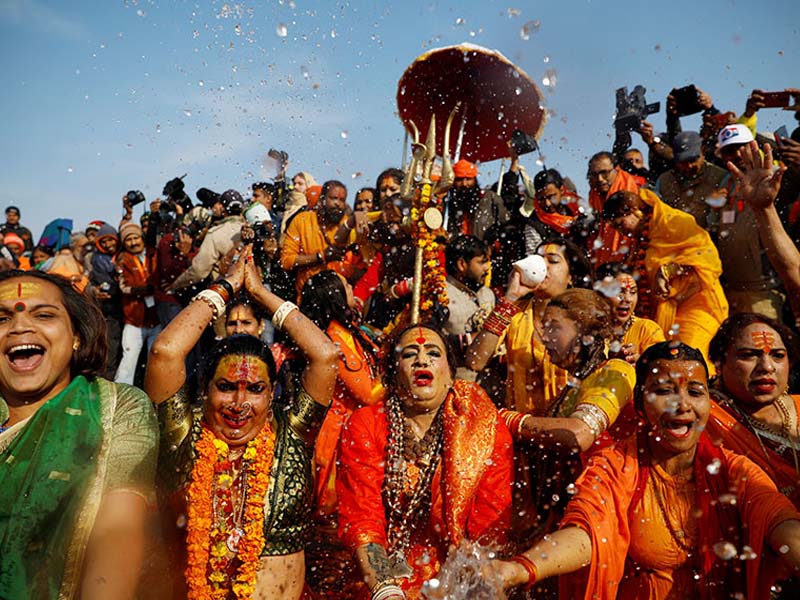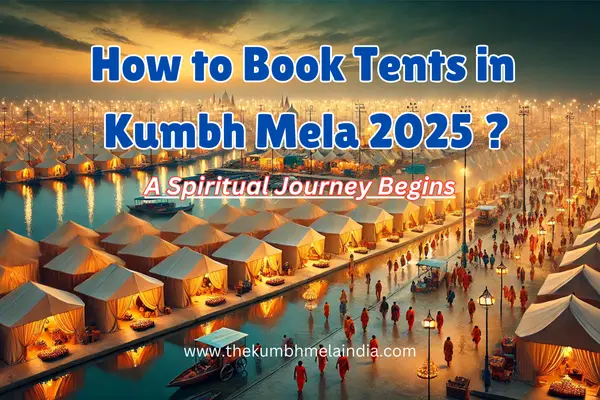Kumbh Mela, also known as Kumbha Mela, is a large Hindu festival in which Hindus gather in a sacred holy river to bathe in. Kumbh Mela represents the world's largest religious event. This one-of-a-kind festival is recognised by UNESCO, and is also part of its list of Intangible Humanity Cultural Heritage. The festival organizes on the banks of a river: In Haridwar on the bank of The Ganges; In Allahabad at the confluence of the Ganges and the Yamuna, and the unseen Sarasvati; In Nashik at Godavari; and the Ujjain at Shipra. The Kumbh Mela is conducted at any given place once in twelve years. So we have the list of the top ten impressive facts from the “Hindus' huge festival, The KUMBH MELA.
10. Participation in the Mela

As time went by more and more pilgrims took part in the Kumbh Mela. Close to 400,000 pilgrims attended the Mela in 1903. More than 500,000 people gathered for the Mela in 1954. The number of people rose to 10 million in 1998, and 40 million in 2001. In 2007 about 70 million people attended and in 2013 around 100 million people attended kumbh mela. 150 million people recently attended the Mela in 2019 making it the largest religious meeting in the world.
9. Finding of the Mela

The mela's first discovery is more than 2000 years old. The first written proof of the mela can be found in the stories of the Chinese visitor Xuanzang, who visited India during the reign of King Harshavardhan. The first known Kumbh Mela account was reported in the 629 BC -645 BC period.
8. Meaning of Kumbh Mela

The mela 'Kumbh' meaning actually means nectar. The origins of Kumbh Mela date back to the time when Gods (Devtas) and Demons (Asura) lived on earth. A curse had affected the devtas, which ultimately created fear and weakened them. Brahma (the creator) instructed them to churn the milky ocean to get the elixir of immortality and at the time of kumb mela, this very churning happens among the Hindu devotees until that day. The narrative, the myth, is complex, multilayered, and full of symbolism. There is, however, one word in the midst of the rich clutter that the Kumbh saga is, that firmly dictates the narrative: immortality. The entire festival revolves around the fear of death and the urge of man to taste the nectar of deathlessness.
7. The Development Of The Mela

In 1892, an epidemic of cholera occurred in the Mela at Haridwar, which led to Haridwar Improvement Society being established to take care of the Mela's rapid development preparations. In 1903, about 400,000 people attended the Mela because of the Mela's Development. A stampede at Allahabad during Kumbh Mela in 1954 resulted in a death toll of around 500 people and many of injuries.
6. Golden Ticket for Heaven

It is believed that if devotee take a bath in the water of holy rivers during the Kumbh Mela, the gods will bless them forever. It will wash away all their sins and they will approach salvation one step closer.
5. Divergent Figures

The Mela's attendants also include several saintly men from various Hindu religions. The Nagas wear no clothes. The Kalpawasis take three bathes a day. The Urdhawavahurs imposed severe austerities on the body. All these holy men do religious rituals associated with their respective communities.
4. Employment Creation

The Mela created around 250,000 jobs in 2019, and was estimated to earn around Rs 1.2 Lakh crores. Mela also draws a lot of tourists from all over the world. Officials set up multiple temporary hospitals for the 2019 Mela.
3. Solar System During Kumbh

The Kumbh Mela is held on the dates when those sacred rivers' waters are said to be turning into nectar. The Mela's exact dates are determined according to a combination of Jupiter, Sun, and Moon zodiac positions. The different combinations of the Four are: the Nashik Mela is Jupiter and Sun both in Leo. The Haridwar Mela is sun in Aries. The Prayag Mela is Jupiter in Taurus, and the Capricorn Sky. Jupiter and Sun are the Ujjain Mela, both in Scorpio.
2. Visible from Sky

An estimated 150 million persons participated in the Mela in 2019. The Mela is so big you can see the Mela from space, literally. The Mela's epicentre known in Prayag as Kumbh Nagri is spread across an area of 58.03 sq. Kilometre. At a height of 817 km from Earth, the ISRO satellite clicked images of the Mela which clearly shows the festival's roads and camps, and even the gatherings of people.
1. Facts Of Number in Kumbh Mela

Special trains operate during the Kumbh Mela 750 to meet the pilgrims at Mela site. There is also a temporary road, or 56.20 kilometres. Approximately 25,800 metric tonnes of food grain are distributed among pilgrims. For a total of 162,000 vehicles, 36 parking slots are made across the city of Allahabad to accommodate incoming vehicles at the Mela.
More Details: Kumbh Mela Haridwar 2021 | Kumbh Mela Packages | Accommodation






